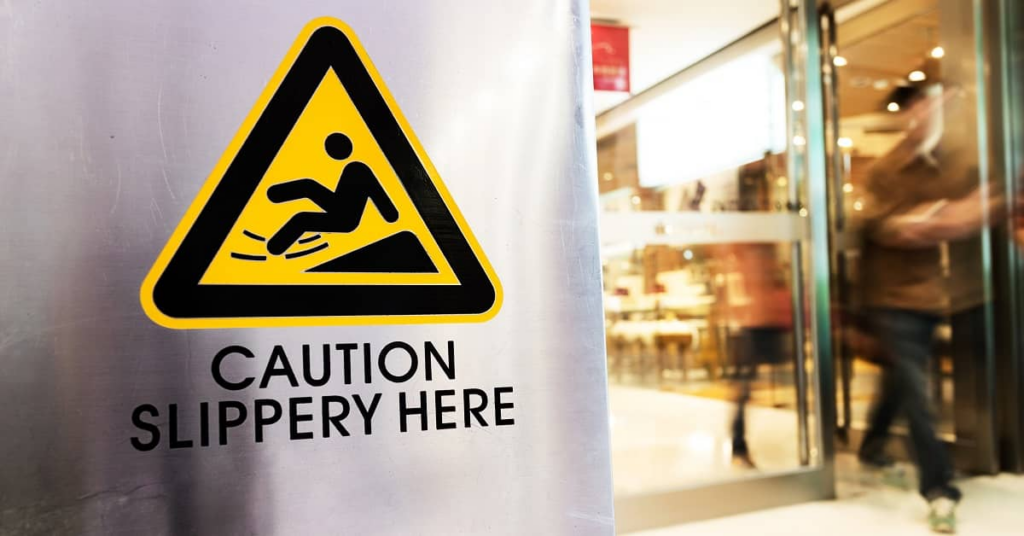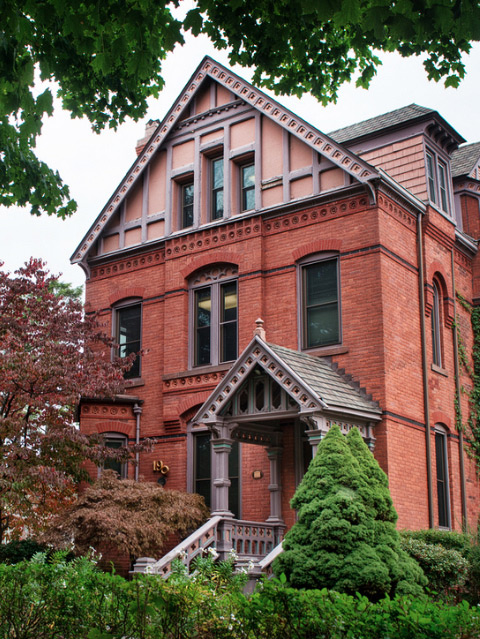
Falls are one of the most common causes of accidental injury. Although many people assume that they slip and fall because they are clumsy, the reality is that the negligence of a property owner or an occupant on the premises often results in these accidents.
It is important to consult a slip and fall accident lawyer as soon as possible if you are hurt on someone else’s property. You may be entitled to compensation for your injuries and losses.
Prompt, thorough investigation is necessary to determine who is at fault for a slip and fall. An experienced attorney can determine the liable party or parties and assess the insurance coverages that may be available.
The Flood Law Firm has extensive experience handling premises liability claims, the area of law that encompasses slip and fall accidents. Contact our team today for a free evaluation of your case.
Liable Parties in a Slip and Fall Accident Claim
Fault in a slip and fall claim generally rests with one of two parties:
- The owner of the property
- A tenant or occupant who controls the premises
When Is the Owner Liable for a Slip and Fall Accident?
The owners of residential and commercial properties are responsible for keeping publicly accessible walkways safe for lawful visitors. They must also warn of potential hazards that can cause someone to slip, trip, or fall.
If the owner failed in one or both of these duties, they can be held liable for the injuries and damages you sustain in a slip and fall. Common examples of conditions that cause slips, trips, and falls for which property owners may be held liable include:
- Wet floors
- Cracked and broken pavement
- Icy sidewalks and parking lots
- Debris in walkways
- Broken stairs and handrails
- Damaged or loose carpeting
- Poor lighting
- Failure to warn of these and other hazards
Regular inspection of the premises and diligent maintenance can alleviate many of these conditions. Unfortunately, homeowners, business owners, and landowners do not always exercise sufficient care, leaving visitors vulnerable to injury in slip and falls and other types of accidents.
When Is a Tenant or Occupant Liable for a Slip and Fall Accident?
Sometimes the party responsible for the safety of the premises does not actually own the property. This may be the case when:
- A business rents a commercial property to serve customers – this practice is commonplace among supermarkets, retail stores, shopping centers, malls, etc.
- A tenant rents a residential property, such as an apartment, condominium, or townhome
As part of the rental agreement, tenants or occupants typically agree to undertake certain duties that would otherwise fall on the owner, including maintenance and inspection of the property and warning visitors of potential hazards. If tenants are negligent in respect to these duties, they may be liable for a slip and fall accident or other injury sustained by visitors to the premises.
One common example of a situation where a commercial tenant may be sued is a slip and fall caused by a wet floor. Floors may become slippery as a result of spills, cleaning operations, and other issues. Although businesses renting commercial properties cannot anticipate or prevent all spills, tenants can (a) monitor the premises for slipping hazards, (b) promptly address the issue, and (c) warn visitors of the danger (most commonly by setting up a “Caution: Wet Floor” sign).
Residential tenants can also be liable for negligence in the care and maintenance of a rental property. Depending on the circumstances, the tenant and/or a landlord or property management company may be at fault if you are hurt in a slip and fall accident.
When Is the Government Liable for a Slip and Fall Accident?
Slip and falls don’t only occur on private property. If you are hurt in a slip and fall accident on public property owned and operated by the government, you may be able to bring a claim against the government agency responsible for the premises.
Claims against the government are subject to special rules, including a limited time to file and specific procedures that must be followed. It is in your best interest to contact a lawyer as soon as possible if you were injured by a dangerous or defective condition on government property.
Comparative Negligence in Slip and Fall Accident Claims
Property owners and insurance companies will often dispute liability for a slip and fall accident. They may try to argue that you were clumsy or inattentive, and this led to the fall and your subsequent injuries.
If the evidence shows that you were partly at fault for the accident, you are not totally barred from recovering compensation. Under the Connecticut comparative negligence rule, claimants can still recover partial compensation so long as they are no more than 50 percent at fault.
Contact a Slip and Fall Accident Lawyer Today
Liability in slip and fall accident claims can be complicated. The recovery of fair compensation for your injuries depends on filing a claim against the party or parties at fault for your injuries.
The Flood Law Firm has extensive experience handling premises liability claims. We pride ourselves on representing clients with injuries ranging in seriousness. Our reputation as serious litigators enables us to achieve higher settlements, but we never hesitate to take cases to trial if it could result in a more favorable outcome for our clients.
Our Results Speak for Themselves
Please contact The Flood Law Firm at (860) 346-2695 today for a free case evaluation. Our slip and fall accident lawyers serve clients in Middletown, Danbury, Bridgeport, Waterbury, and all of Connecticut.
